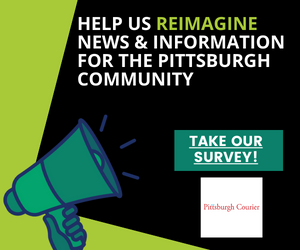Lauren Price dropping off her daughter, Ava, for in-person learning at the Pioneer Education Center. Ava is a 12-year-old in 6th grader at Pioneer. (Photo by Nick Childers/PublicSource)
Twelve-year-old Ava is known in the halls of the Pioneer Education Center for her zestful spirit and wide, expressive blue eyes. She’s engaged and gregarious. “Little Miss Personality,” her mother said. But Ava’s eyes were often shut behind the computer screen this school year, as she went without face-to-face access to her teacher or hands-on services, such as physical therapy stretches to relax her tight muscles.
“She’d fall asleep in her wheelchair because she’s bored,” her mother, Lauren Price, said.
Ava, who is non-verbal and still learning to communicate, usually receives services including physical therapy and occupational therapy at the center, but most were unable to happen in a virtual learning setting.
“Everything just kind of got ripped away,” Price said.
Now that students are back in the building, Pioneer educators and parents are reflecting on the year of COVID school and hoping to move forward with new perspectives on how a community can come together to preserve its children’s education. This makes them part of a larger call for systemic change in the education system to better serve students who have been historically underserved by public school districts.
Pioneer is a single-story boomerang-shaped building tucked away in Brookline. The Pittsburgh Public Schools’ [PPS] special education center is a school unlike any other in the city.
Each part of the Pioneer Center was designed to address the needs of the students, who are medically fragile or experience multiple disabilities. The wide doorways accommodate wheelchairs with ease. Bathroom stalls are finished with changing stations and heavy tan curtains instead of doors in case of emergency, and there are tailored rooms dedicated to teaching students how to navigate the world beyond the classroom.
It’s a small school community of about 12 teachers and 70 students ages 5 to 21. They are students whose individualized education plans [IEP] require a more comprehensive school environment. About 50% of students are Black, and 56% come from families earning low incomes.
READ ENTIRE ARTICLE AT:
‘A forgotten piece’: Pioneer Center community finds respite in each other in COVID learning
